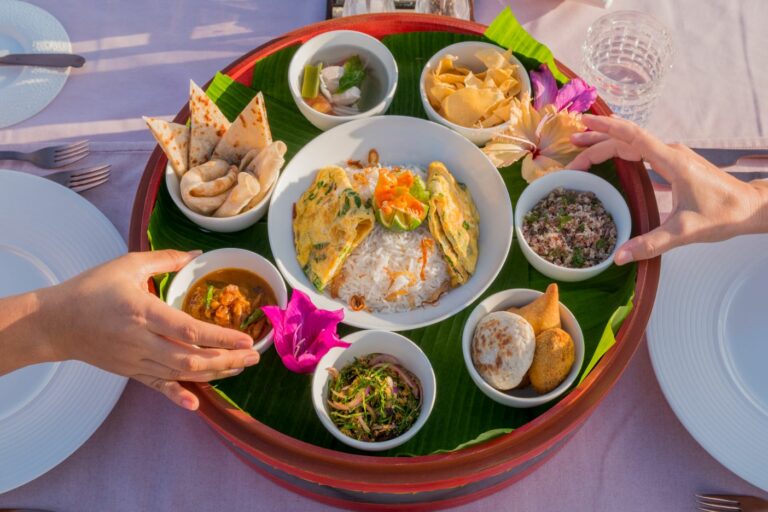Introduction: Exploring Maldives’ Cuisine
The Maldives is a tropical paradise that has become increasingly popular among tourists for its stunning beaches and crystal-clear waters. However, this archipelago in the Indian Ocean has much more to offer, including a unique cuisine that reflects the country’s rich cultural and natural heritage. Maldivian cuisine is a fusion of Indian, Sri Lankan, Arabic, and African influences, with a strong emphasis on seafood and coconut-based dishes. In this article, we will explore how the Maldives’ tropical environment and agriculture have shaped its cuisine.
Maldives’ Tropical Environment and Agriculture
The Maldives is a group of islands that spans across 90,000 square kilometers, with over 99% of its territory covered by water. As a result, the country’s cuisine relies heavily on seafood, especially tuna, which is the mainstay of Maldivian cuisine. In addition to tuna, other popular fish used in Maldivian cuisine include mahi-mahi, barracuda, and reef fish. Maldivians also catch and consume a variety of shellfish, such as crab, lobster, and squid.
Aside from seafood, coconut is another essential ingredient in Maldivian cuisine, as coconut palms are abundant in the country. Every part of the coconut tree is used in Maldivian cooking: the flesh, milk, and oil are used in curries, chutneys, and desserts, while the shells and husks are used to make plates, bowls, and other household items. In addition to coconut, other fruits and vegetables grown in the Maldives include bananas, papayas, mangoes, and yams.
Fish: The Mainstay of Maldivian Cuisine
As previously mentioned, fish is the centerpiece of Maldivian cuisine. The Maldives’ location in the Indian Ocean has made it a prime spot for fishing, and the country has a long history of sustainable fishing practices. Fish is typically cooked in a curry or grilled and served with rice. Mas huni, a popular breakfast dish, is made from mashed tuna, grated coconut, onion, and chili, and served with flatbread. Another traditional dish is garudiya, a clear fish broth made with tuna, curry leaves, and lime.
Coconut: A Versatile Ingredient in Maldives’ Cuisine
Coconut is an incredibly versatile ingredient in Maldivian cuisine, used in both sweet and savory dishes. One of the most popular coconut-based dishes is called roshi and mas huni, which consists of flatbread served with mashed tuna, grated coconut, onion, and chili. Other coconut-based dishes include kiru sarbat, a refreshing drink made from coconut milk, sugar, and rose water, and fihunumas, a dessert made from coconut, sugar, and cardamom.
Spices: The Flavorful Touch to Maldivian Dishes
Spices are another critical aspect of Maldivian cuisine, adding depth and complexity to the dishes. Curry powder, cumin, coriander, and turmeric are commonly used in Maldivian cooking, as well as pandan leaves, which add a fragrant, nutty flavor to rice dishes. Chilies are also a staple in Maldivian cuisine, used to add heat and flavor to curries and chutneys.
Conclusion: Maldives’ Cuisine: A Fusion of Nature and Culture
In conclusion, Maldivian cuisine reflects the country’s unique blend of cultural and natural influences. The tropical environment and abundance of fish and coconut have shaped Maldivian cuisine, while Indian, Sri Lankan, Arabic, and African spices and flavors have added depth and complexity. Whether you’re a seafood lover or a fan of coconut-based dishes, Maldivian cuisine is sure to delight your taste buds.

